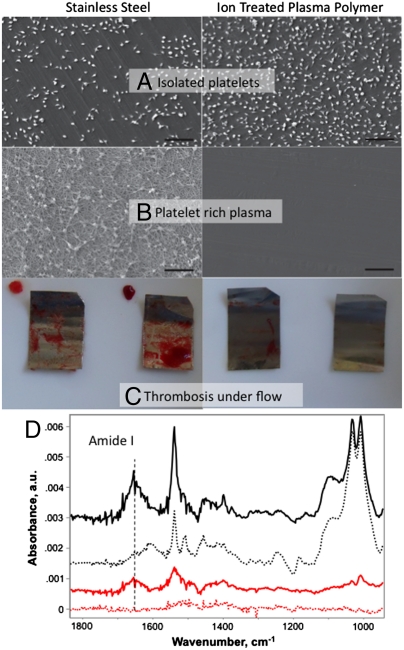Fig. 2.
Comparison of hemocompatibility of ion-treated plasma polymers with bare stainless steel as used in stents. Scale bars, 20 μm. (A) Isolated platelets in buffer adhere to both surfaces. (B) The presence of protein in platelet-rich plasma prevents platelets adhering to the surface of the ion-treated plasma polymer while fibrinogen fibrils and platelets adhere to the stainless steel surface. (C) Acute thrombogenicity was measured under physiological flow conditions (80 mL/ min at 37 °C) in a modified Chandler loop. Thrombi formed in the presence of stainless steel strips (8 mm wide) after 30 minutes of flow, however, no thrombi formed in the presence of the ion-treated plasma polymer coated surfaces. (D) ATR-FTIR shows that protein from whole blood is covalently bound to the ion-treated polymer surface and not to the stainless steel. Protein attached during flow on the ion-treated plasma polymer surface (black solid spectrum, upward shifted to top) is retained after SDS washing (black dotted spectrum, upward shifted to second position) [2% SDS solution, 70 °C for 1 h, then 100 °C for 1 h]. Protein attached during flow on the stainless steel (red solid spectrum, upward to third position) is completely removed after SDS washing (red dotted spectrum, unshifted bottom). The sharp peaks in the top two spectra are due to characteristic vibrations of the ion-treated plasma polymer, which partially mask the amide II protein peak. Amide I is clearly visible in all spectra.

